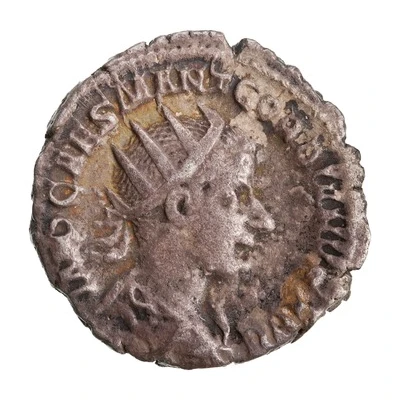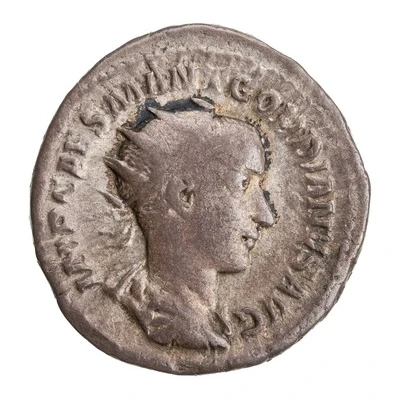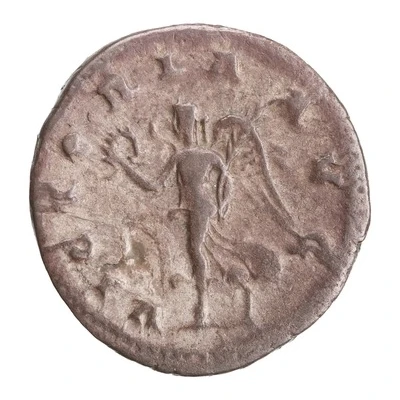Antoninianus - Gordian III SPES PVPLICA; Spes
| Silver | - | - |
| Issuer | Rome › Roman Empire (27 BC - 395 AD) |
|---|---|
| Emperor | Gordian III (Marcus Antonius Gordianus) (238-244) |
| Type | Standard circulation coin |
| Years | 238-239 |
| Value | Antoninianus (1) |
| Currency | Antoninianus, Reform of Caracalla (AD 215 – 301) |
| Composition | Silver |
| Shape | Round (irregular) |
| Technique | Hammered |
| Demonetized | Yes |
| Updated | 2024-10-05 |
| Numista | N#280940 |
|---|---|
| Rarity index | 97% |
Reverse
Spes, draped, advancing left, holding flower in raised right hand and raising skirt with left hand.
Script: Latin
Lettering: SPES PVPLICA
Translation:
Spes Publica.
Hope of the public.
Comment
Source:Online Coins of the Roman Empire (OCRE)
Interesting fact
The Antoninianus coin was introduced by the Roman Emperor Caracalla in 215 AD as a replacement for the denarius, which had been the standard Roman currency for centuries. The Antoninianus was made of silver and had a higher purity level than the denarius, which had been debased over time. The coin was named after Caracalla's adopted father, Antoninus Pius, and it became the main currency of the Roman Empire for over a century. The SPES PVPLICA (Spes) mint mark on the coin indicates that it was produced at the Roman mint in Rome during the reign of Gordian III (238-239 AD). The Spes mint mark was used during this period to indicate coins that were produced using a new, higher-quality silver alloy. Overall, the Antoninianus coin played an important role in the Roman economy and was a symbol of the Roman Empire's power and influence.



